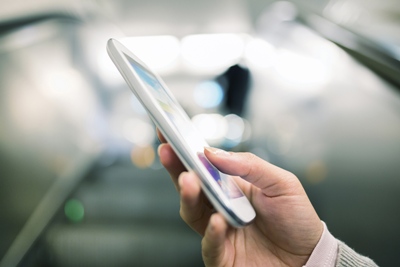 The use of self-service technology in Saudi Arabia is expected to surge in the next 12 months as an increasing number of airline passengers opt for technology rather than face-to-face interactions at the airport. These are the findings of the 2016 Passenger IT Trends Survey revealed today by air transport technology provider SITA.
The use of self-service technology in Saudi Arabia is expected to surge in the next 12 months as an increasing number of airline passengers opt for technology rather than face-to-face interactions at the airport. These are the findings of the 2016 Passenger IT Trends Survey revealed today by air transport technology provider SITA.
In particular, mobile self-service usage across key steps in the airport journey is expected to surge in 2017. A growing number of airline passengers have indicated that they plan to use mobile self-service options in the next 12 months – 20% for check-in and 24% for self-boarding – up from 4% for check-in and 14% for boarding in 2016. This increase is being helped by the fact that more than 96% of all Saudi travelers carry one or more smartphones.
Airline passengers are also demanding more mobile services in the coming year. More than 70% of passengers would like to receive notifications regarding their baggage while 71% would like to receive flight updates.
Hani El-Assaad, SITA President, Middle East, India and Africa said: “Passengers prefer self-service technology as it gives them more control during their journey while helping airports improve the flow of passengers through their facilities. Once passengers start using self-service options they would rather switch to another technology than go back to a face-to-face interaction.”
While 79% of Saudi travelers were happy with their overall journey, far fewer experienced positive emotions at key steps such as security (69%), passport control (68%) and baggage collection (64%). These areas also corresponded with steps in the journey where no self-service options were available. Yet 88% of airline passengers experienced positive emotions when booking their flights – a step where 87% of travelers used self-service technology.
“There is real opportunity for Saudi airports to provide more self-service options, particularly at traditional pain points such as baggage, security and passport control. The benefits of self-service technology at these keys steps in the airport journey can significantly improve passenger satisfaction while helping airports and airlines manage more passengers, particularly during busy periods such as Hajj,” said El-Assaad.
Saudi Arabia’s General Authority of Civil Aviation (GACA) is expanding and upgrading all 26 airports it operates and the airports are expected to have a combined capacity to handle over 100 million travelers by 2020. Technology will play a key role in the expansion and modernization of the country’s airport infrastructure.
A key focus of GACA’s development program is accommodating the millions of pilgrims that visit Saudi Arabia every year, particularly during Hajj. In 2016 a total of 1.86-million pilgrims travelled to Saudi Arabia for Hajj, more than two-thirds arriving by air.
This year SITA also analyzed the behavior of four different types of passengers: The Careful Planner, Pampered, Hyper-Connected and Open-Minded Adventurer profiles, each of whom use technology differently. The largest profile group was careful planners making up 38% of all travelers in Saudi Arabia. These passengers often double check every stage of preparation and travel and tend to use technology, such as mobile devices to book, check-in and manage their trip, more frequently than the other profiles.


